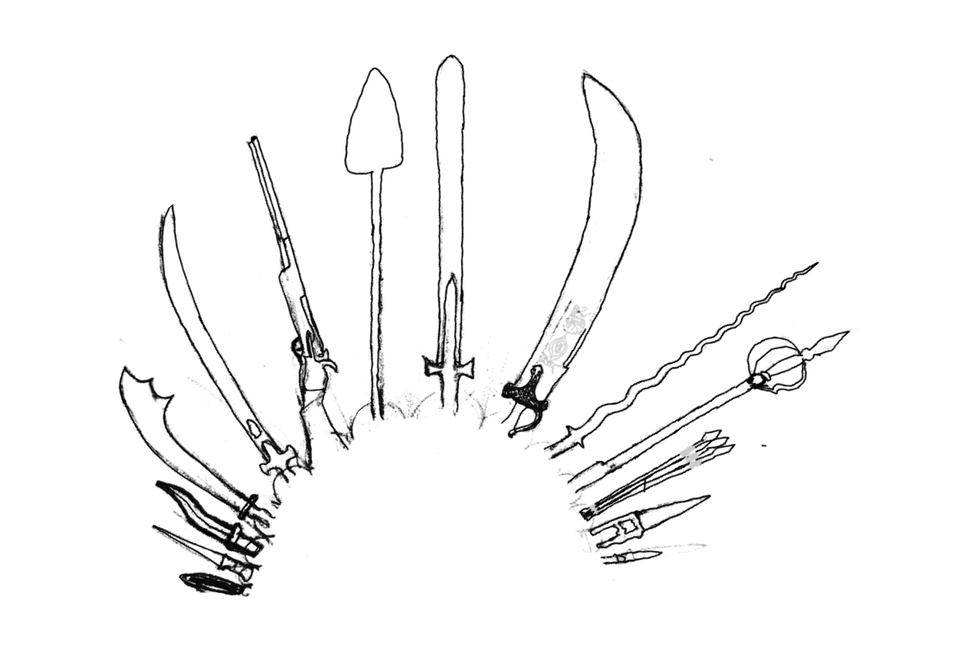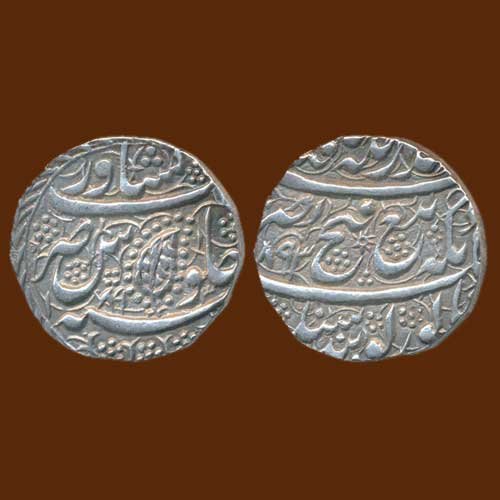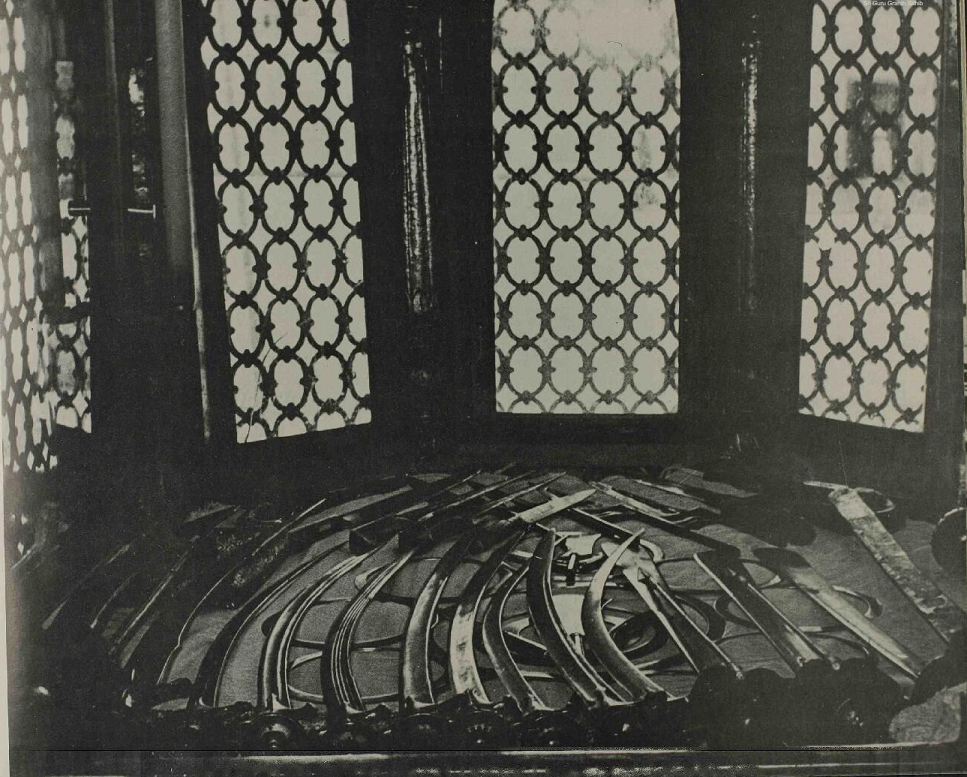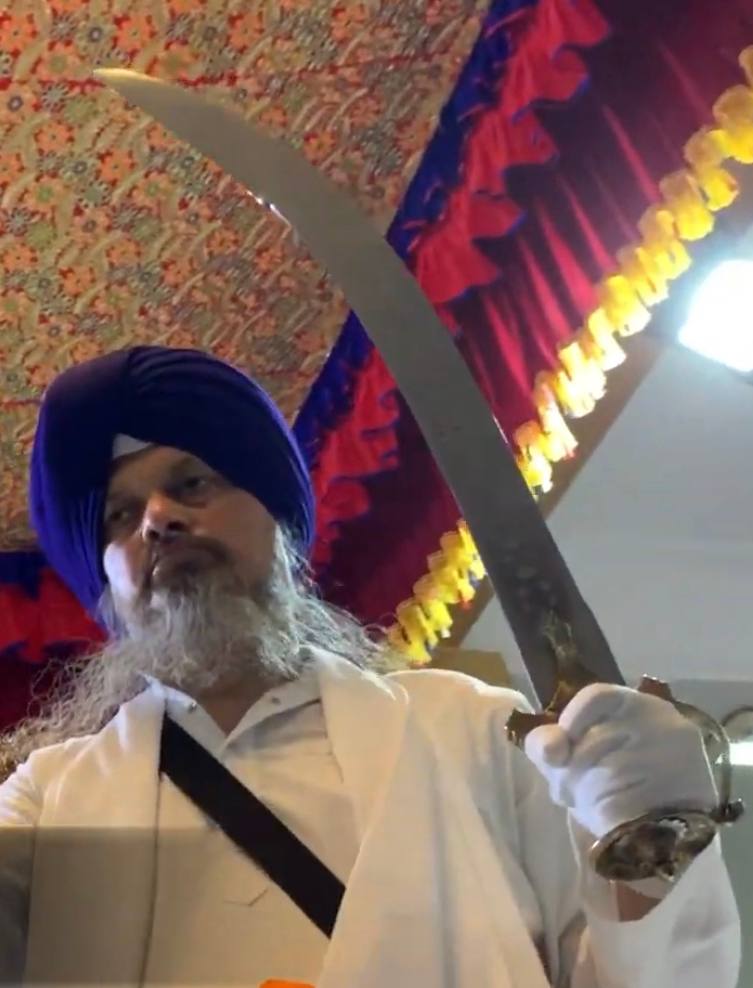The Glory of Shastars & Manglacharan

Shastar Naam Mala is Gurbani revealed to us by Dhan Dhan Sri Guru Gobind Singh Sahib Ji Maharaj. Shastar Naam Mala actually refers to a set of 5 Adhiyaye's (sections/chapters). The first adhiyaye is what we will be focusing on. The first adhiyaye consists of 27 dohara-couplets. The adhiyayes that follow, provide us names of specific shastars. The 2nd adhiyaye is dedicated to the names of the Chakkra, the 3rd adhiyaye is dedicated to the names of the Baan (Bow & Arrow), the 4th adhiyaye is dedicated to the Paas (Noose), and the 5th adhiyaye is dedicated to the names of the Thupak (Gun). The 4 adhiyayes (about the Chakkra, Baan, Paas, and Thupak) are written in a riddle format.
Note: there are differences between versions of Dasam Paatshah's Gurbani. We will be doing vichaar on Shastar Naam Mala according to the Senchee presented by Takht Sachkhand Sri Hazur Sahib.
Classifications of Shastars
How can we better understand Shastars? There are multiple classifications to consider. There are four categories of weaponry (based on Indian traditional understanding):
1) Muktha (Free): that which leaves from the hand (thrown; e.g. chakkra)
2) Amuktha (Not Free): that which does not leave from the hand (meaning kept in hand; e.g. swords, punch daggers)
3) Muktha-Aamuktha (Free or Not Free): that which can leave the hand and can also be utilized while in the hand (e.g. spear, tomahawk, throwable knives)
4) Yanthra Muktha (Free using Technology): that which is launched through
the power of technology or mantra (e.g. arrows, bullets)
Projectiles (being thrown/launched) are referred to as Asthars. There are more detailed categories as well but this is a general classification based on Shukraniti.
Bhagti before Shakti
Before diving into an extensive discussion around Shastars, we must reflect on the Khalsa's spiritual foundation. The knowledge of weaponry is only useful if you are spiritually grounded. Otherwise, there is no difference between you and anyone else in the world with a weapon. Sikhi is a path of destroying our own egos and maintaining Dharam (righteousness) in this world while remembering Akaal Purakh in each and every breath.
Dhan Guru Nanak Dev Ji bless us with the following Bachan in Raag Aasaa:
ਤਰਕਸ ਤੀਰ ਕਮਾਣ ਸਾਂਗ; ਤੇਗਬੰਦ ਗੁਣ ਧਾਤੁ ॥
Tharkas Theer KamaaN Saa[n]g Thaegba[n]dh GuN Dhhaath
One should be armed with the Quiver, the Arrows, the Bow, the Saa[n]g, and the Sheath of Divine Virtues (wield internal weapons such as compassion, being truthful, having contentment, patience, forbearance among many other saintly qualities)
(Ang 16)
Dhan Guru Ramdas Ji Sahib further mention the internal weapons we must wield:
ਸਤਿਗੁਰੂ ਕਾ ਖੜਗੁ ਸੰਜੋਉ, ਹਰਿ ਭਗਤਿ ਹੈ...
Sathiguroo Ka Kharrhag[u] Sa[n]joO[u] Har[i] Bhagath[i] Hai
Satguru Ji's Sword and Armour are Bhagti (Devotional worship of Vaheguru)
(Raag Gaurrhee Ang 312)
Dhan Guru Nanak Dev Ji Maharaj put priority on this internal battle within the mind:
ਗਿਆਨ ਖੜਗੁ ਲੈ ਮਨ ਸਿਉ ਲੂਝੈ; ਮਨਸਾ ਮਨਹਿ ਸਮਾਈ ਹੇ ॥੩॥
Giaan Kharhhag[u] Lai Man Sio[u] Loojhai; Mansaa Manah[i] Samaaee Hae
Taking the Sword of Spiritual Wisdom, fight with the mind... make your mindset merge into Guru Sahib's mindset.
(Raag Maaroo, Ang 1022)
There are many historical contexts that show where and why Sikhs were blessed with Shastars by Guru Sahib. It is hard to go into each and every detail. Daas suggests listening to katha of Sri GurPratap Suraj Prakash Granth, the various Gurbilaas granths, Panth Prakaash, and other historical granths for more information.

Degh-Tegh-Fateh
Degh-Tegh Fateh is the motto of the Khalsa.
It shows us the role of weapons in Sikhi.
Degh = Cauldron (referring to Langar)
Tegh = Sword (referring to the Protection of the Persecuted)
Fateh = Victory
Maharaj had blessed us the Khalsa with the role: "To Protect and Serve" existing before North American police forces used it as their motto.
Dhan Dhan Guru Gobind Singh Ji Maharaj write about this in Chaubis Avataar:
ਦੇਗ ਤੇਗ; ਜਗ ਮੈ ਦੋਊ ਚਲੈ ॥
Dhaeg Thaeg Jag Mai Doou Chalai
Let the Cauldron and the Sword be active in this world.
Miri Piri
Following the Shaheedi of Pancham Paatshah Dhan Dhan Sri Guru Arjan Dev Ji Maharaj, 6ve Paatshah Ji raised the Two Divine Swords of Miri (Political Authority) and Piri (Spiritual Authority):
ਦੋ ਤਲਵਾਰੀ ਬੱਧੀਆ, ਇਕ ਮੀਰੀ ਦੀ ਇਕ ਪੀਰੀ ਦੀ ।
Dho Thalvaaree Badhheeaa Eik Meeree Dhee Eik Peeree Dhee
Keeping Two Swords with Them, One of Miri and One of Piri
ਇਕ ਅਜਮਤ ਦੀ, ਇਕ ਰਾਜ ਦੀ, ਇਕ ਰਾਖੀ ਕਰੇ ਵਜੀਰ ਦੀ ।
Eik Ajmath Dhee Eik Raaj Dhee Eik Raakhee Karae Wajeer Dhee
One Sword of Great Glory (Undescribable Spiritual Greatness ~ Piri), One Sword of Political Reign... They both will protect the Vazeers/Ministers (most likely the Dhadis referring to themselves being in Guru Sahib's Protection; sung by Dhaadi Abdullah Mir and Nath Mal in Hazuri of 6ve Paatshah Guru Hargobind Sahib Ji Maharaj).

Origins of Akaal Takht
After establishing the Takht (throne) at Akaal Bunga Sahib (Seat of Political Authority), Akaal Purakh had a dialogue with Dhan Guru Hargobind Sahib Ji:
ਜਬ ਲਗੁ ਤੁਮਰੀ ਦੇਹ ਰਹਾਵੋ।
Jab Lag[u] Thumree Dhaeh Rahaavo
While Guru Sahib remain in a physical body...
ਤਬ ਲਗੁ ਤੁਮ ਯਾ ਪਰਿ ਛਬਿ ਪਾਵੋ।
Thab Lag[u] Tum Yaa Par[i] Chhab[i] Paavo
...till then should Maharaj beautifully seat Themselves on the Throne.
ਪਾਛੇ ਸ਼ਸਤ੍ਰ ਰੂਪ ਮਮ ਜਾਨੋ।
Paachhae Shastr Roop Mam Jaano
... After when Guru Sahib is not in a body anymore then recognize Shastars as Their Form
ਮਮ ਪੂਜਾ ਇਹ ਠਾਂ ਠਾਨੋ॥੫੧॥
Mam Poojaa Eih Ttaa[n] Ttaano
[and] worship [the Shastars] while having them seated on this [Takht]
(Gurbilas Paatshahee 6vi)
Giani Gurwinder Singh Ji Nangli's Brahm Kavach Bhagouthee Asthothar Steek provides a lot of insight as to why Shastars are spiritually and historically important to Sikhs.
Shastars on Takht vs. Kapooraa Chaudhary
When Kalgidhar Maharaj Ji used to sit on a Takht (throne), They would also have another takht decorated with Shastars on them. While one Sikh did Chaur Sahib seva over Guru Sahib, another Sikh did Chaur Sahib seva over the Shastars. This is the same Shastar maryada kept today at the Sikh Takht Sahibs.
There is one instance where Kalgidhar Maharaj Ji went to Kot Kapooraa (Punjab). Like mentioned above, Maharaj had the Shastars arranged on a takht and a Sikh was doing Chaur Sahib seva. Someone referred to as Kapooraa Chaudhary was standing there with a chaadar (large cloth, similar to a blanket) around his waist. This cloth kept blowing dust onto the Shastars. A Sikh by the name of Bhai Maliaagar Singh told Kapooraa to take care of his chaadar because the Shastars are the Khalsa's Pirs (Saints). Kapooraa got angry and complained to Kalgidhar Maharaj. Kapooraa asked Maharaj why the Shastars were being kept on a throne and given Chaur Seva. Maharaj asked Kapooraa about who canopies and chaurs are for? Kapooraa replied for Gurus and Pirs. Maharaj smiled and said I am the Guru of The Sikhs and humbly stated that These Shastars are my Guru.
Rai Kalla Ji
At the time when Nooraa Maahee broke the news of the Shaheedi of the Chhotay Saahibzaaday, Guru Sahib had made a Bachan to the Sangat that the Mughal Reign will be uprooted. Rai Kallaa Ji became worried and had been bestowed power by the Mughals but he was a loving Sikh of Maharaj. Rai Kalla Ji did Benti to Maharaj to not uproot his power and the fact that he did not believe in the Mughals' authority. Maharaj said it was too late and that they had already given bachan. However, Rai Kalla Ji had gotten blessed with a Sri Sahib (Kirpaan) from Maharaj. Maharaj instructed him to do Seva of the Kirpaan. As long as the Seva of the Kirpaan is done, his family will remain in power and live in peace. Rai Kalla Ji felt blessed to be able to do this seva. Rai Kalla Ji does full worship of the Shastars: preparing a throne, rumallay, chandan fragrance, mala's of flowers are offered, deeva-lamp is lit, a blanket is offered in the winter, and a special thin cloth is offered in the summer. This worship was done with so much love. Rai Kalla Ji's son continued to do the Seva of the Shastar but then Rai Kalla Ji's grandson got misled by Muslims that claimed he was idol worshipping. Rai Kalla Ji's grandson died right after he stopped the Shasthar seva.
The Sri Sahib is present at Takht Sri Kesgarh Sahib for darshan.

Creation of the Khalsa
Furthermore, we cannot forget about the Creation of the Khalsa. Sri Kalgidhar Maharaj raised a Sword asking for heads. Panj Piaare Bhai Dharam Singh, Bhai Daya Singh, Bhai Himmat Singh, Bhai Mohkam Singh, and Bhai Sahib Singh stepped forward. The Khalsa was prepared from a sword and Pahul is made by infusing both Gurbani and the Khanda sword into an iron bowl with sweet pathaashay. The Rehat of the Khalsa includes keeping a Kirpan as part of the 5 Kakkaar (Kes, Kara, Kirpaan, Kangha, and Kachheraa):
ਕ੍ਰਿਪਾਨ ਕੜਾ ਕਛ ਕੇਸ ਕੰਕਤ ਕਰ ਦੀਨਹਿਂ ਨਿਸਚੈ ਪਾਂਚ ਕਕਾਰੇ।
ਪਾਂਚ ਕਕਾਰ ਦੀਏ ਗੁਰ ਨੇ ਪੁੰਜ ਪਾਂਚ ਕਾ ਪਾਂਚ ਵਿਕਾਰਨ ਮਾਰੇ।
(Sri Gur Katha, Bhai Jeevan Singh/Bhai Jaita Ji, Rangretta Guru Ka Beta)
In conversation with Captain Murray, Bhai Rattan Singh Bhangoo explains how the Khalsa's Rehat was started by Dhan Dhan Guru Gobind Singh Ji Maharaj:
ਪੂਰਬ ਰਹਿਤ ਬਤਾਨ ਮੈ, ਦਸਮ ਗੁਰੂ ਕ੍ਰਿਪਾਨ।
Poorab Rahith Bathaan Mai Dasam Guroo Kripaan
Firstly, Guru Sahib explained the Rehit of the Sri Sahib and that the Guru's Singh should wield a Sri Sahib upon being blessed with the Khanday-Batta da Pahul (becoming Amritdhari)
ਇਸ਼ਟ ਦਿਢਾਯੋ ਸਿੱਖਨ ਕੋ, ਔਰ ਦੇਵ ਦਰਿਹਾਨ ॥੨॥
Eisht DiDhaayo Sikhan Ko Aur Dhaev Dharihaan
In this way, Guru Sahib introduced the Sri Sahib as an Isht (Beloved worthy of Worship) and that this Kirpaan will destroy demons.
ਅਰੁ ਨਿਜ ਬਾਨੀ ਮੈਂ ਗੁਰੂ, ਇਹੋ ਵਰਨਿਓ ਬੀਰ।
Ar[u] Nij Baanee Mai Guroo Eiho Varnio Beer
In Their Bani, Guru Sahib say the following:
ਸੈਫ ਸਰੋਹੀ ਸੈਹਥੀ ਯਹੈ ਹਮਾਰੈ ਪੀਰ।੩।
"Saif Sarohee Saihathhee Yahai Hamaarai Peer"
quote from Shastar Naam Mala... meaning that Shastars are our Saints.
(Naveen Panth Prakash, Giani Giaan Singh)
Dussehra Mahatham
The Khalsa worships weapons and sees them as the Shakti (Power) of Akaal Purakh. This worshipping especially occurs during the times of Dussehra. The following excerpt is from Nihung Santhia:
"If we look into our ancient history, we see that from Treta Yug (the era in which Sri Ram Chandra lived), all warriors from different denominations of Bharat would celebrate Dasehra as a day of ‘Shastar Pooja’ i.e. a time to pay homage and to worship ones weapons. But as time went on this tradition started to fade. Sri Guru Gobind Singh Ji Maharaj revived and cemented this Puratan tradition within the Khalsa Panth. Sri Guru Gobind Singh Ji made the shastar a paramount part of a Khalsa’s life, praising it in his baani, saying ‘
‘ਸੈਫ ਸਰੋਹੀ ਸੈਹਥੀ ਯਹੈ ਹਮਾਰੈ ਪੀਰ||’
‘Shastar’ was made at the beginning of creation. Before creating the world, Nirankaar (the formless God) created the power of destruction (a Shastar weapon is the physical manifestation of this shakti/power of Vaheguru). This is mentioned in Guru Gobind Singh Ji’s Bani and is why Guru Sahib bows down to the ‘Bhagauti’ (sword/form of Vaheguru) and says, ‘
ਪ੍ਰਿਥਮ ਭਗਉਤੀ ਸਿਮਰ ਕੈ’ and ਖੰਡਾ ਪ੍ਰਿਥਮੈ ਸਾਜ ਕੈ ਜਿਨ ਸਭ ਸੈਸਾਰੁ ਉਪਾਇਆ||’.
In his Gurbani, Kalgidhar Patshah has continuously bowed down over and over to the shastar as the form of Vaheguru saying,
‘ਜਿਤੇ ਸਸਤ੍ਰ ਨਾਮੰ||ਨਮਸਕਾਰ ਤਾਮੰ||’
Here is the full link for further details about Dussehraa Mahatham.
There are many other Sakhis that will be discussed throughout this pothi but this section was written in order to give a general understanding of the Love between the Sikhs and Weapons.
With this context provided and with Maharaj's blessings, we can begin this pothi with a brief translation of the Manglacharan as is also the same as the beginning of Bhagouthee Asthothar (referred to Giani Gurwinder Singh Ji's Steek for this).
There can be an entire pothi written about just arths/meanings on Ik Oangkaar and Vaheguru but to stay within the scope of this pothi, we are keeping the manglacharan translation short.
ਨਮਸਕਾਰ ਸ੍ਰੀ ਖੜਗ ਕੋ; ਕਰੌ ਸੁ ਹਿਤੁ ਚਿਤੁ ਲਾਇ ॥
Namaskaar Sri Kharag Ko Karo So Hith Chith Laae
Bowing to The Sword/Sword-Wielder, doing so with great affection and full focus on You
ਪੂਰਨ ਕਰੌ ਗਿਰੰਥ ਇਹ; ਤੁਮ ਮੁਹਿ ਕਰਹੁ ਸਹਾਇ ॥੧॥
Pooran Karo Gira[n]th Eh[u] Tum Muhi Karahu Sahaae
Please help me complete this Granth with Your Support
(Daas begins with this Request to begin, the same Doharaa written by Sri Kalgidhar Maharaj to commence Bachithar Naatak... even here the Sword is being used in Divine Contexts!)
ੴ ਸ੍ਰੀ ਵਾਹਿਗੁਰੂ ਜੀ ਕੀ ਫਤੇ ਹੈ
Ik Oang Kaar; Sree Vaahiguroo Jee Kee Phathae Hai
The One of Non-Dual Form and the Consciousness/Awareness of All
Sri = Shiromani (Highest) Vaheguru Ji whose Victory always reigns
ਸ੍ਰੀ ਭਗਉਤੀ ਜੀ ਸਹਾਇ॥
Sree Bhagouthee Jee Sahaaei
Let The Highest (Shiromani) Shakti (Power which belongs to Vaheguru) be always of Support
Bhagouth = Vaheguru
Bhagouthee = Vaheguru's Shakti
ਅਥ ਸ੍ਰੀ ਸਸਤ੍ਰ ਨਾਮ ਮਾਲਾ ਪੁਰਾਣ ਲਿਖ੍ਯਤੇ ॥
Athh Sree Sasthr Naam Maalaa PuraaN Likhyathae
Now Sri Shastar Naam Maalaa Puraan is being written:
ਪਾਤਿਸਾਹੀ ੧੦ ॥
Paathisaahee Dasvee[n]
With the Seal of Dasvay Paatshah Sri Guru Gobind Singh Sahib Ji Maharaj, we begin to recite this Gurbani:
ਦੋਹਰਾ॥
Doharaa/Dhoharaa
A type of maathrik chhand (chhand dependent on the count of mathraas). Also referred to as Doha/Dhohaa. Its notable trait is having two lines. Each line will be split into two parts with a pause/vishraam in between. The first part before the pause is 13 Matra's long and the second part after the pause is 11 Matra's long. Each of the two lines should be a total of 24 Mathraas long (From Mahaan Kosh)
–
The next section will begin with the first Dohara. Please forgive all mistakes. Accept daas to be a lost child and please correct me.
~Aaeenaa

